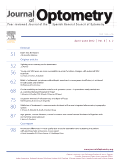
Journal of Optometry
Scope & Guideline
Championing accessibility in optometric research.
Introduction
Aims and Scopes
- Refractive Errors and Myopia Management:
The journal frequently publishes studies on the prevalence, causes, and management strategies for refractive errors, particularly myopia, in different populations, highlighting the need for effective interventions. - Clinical Assessment and Diagnosis:
Research articles often focus on the methodologies used for assessing visual acuity, ocular motility, and binocular vision, contributing to improved clinical practices and diagnostic accuracy. - Ocular Health and Disease:
The journal covers a wide array of topics related to ocular diseases, including dry eye syndrome, keratoconus, and the impact of systemic conditions on eye health, promoting a holistic approach to patient care. - Technological Advances in Optometry:
There is significant emphasis on new technologies in optometry, including optical coherence tomography and artificial intelligence applications, which are reshaping diagnostic and treatment methodologies. - Vision Therapy and Rehabilitation:
Research on vision therapy techniques and their effectiveness is a recurring theme, focusing on improving visual function in patients with amblyopia, strabismus, and other conditions. - Public Health and Societal Impact:
Papers often explore the relationship between ocular health and socioeconomic factors, emphasizing the public health implications of visual impairment and the importance of accessibility to eye care.
Trending and Emerging
- Artificial Intelligence and Machine Learning:
There is a growing trend in the use of AI and machine learning technologies for diagnostics and treatment planning in optometry, showcasing the journal's commitment to integrating cutting-edge technology into clinical practice. - Impact of Digital Devices on Visual Health:
Research examining the effects of prolonged use of digital devices on visual function and the prevalence of conditions like computer vision syndrome is on the rise, reflecting societal changes in technology usage. - Personalized and Evidence-Based Vision Therapy:
There is a notable increase in studies exploring personalized approaches to vision therapy, focusing on individualized treatment plans based on specific patient needs and conditions. - Public Health Implications of Vision Care:
Emerging studies emphasize the public health aspects of optometry, particularly the impact of socioeconomic factors on visual health and access to care, which is becoming a vital area of research. - Innovative Treatment Modalities:
Research into new treatment modalities, including pharmacological interventions and advanced surgical techniques, is gaining prominence, reflecting the journal's focus on advancing clinical practice.
Declining or Waning
- Traditional Vision Correction Methods:
There is a noticeable decline in studies focusing solely on traditional methods of vision correction, such as glasses and basic contact lenses, as newer technologies and methods gain traction. - Basic Visual Acuity Testing:
Research centered around simple visual acuity tests is becoming less frequent, possibly due to the growing interest in more comprehensive assessments of visual function and ocular health. - Basic Epidemiological Studies:
While epidemiological research remains important, there is a shift away from basic prevalence studies towards more complex, multifactorial analyses that explore the interplay of various factors affecting ocular health. - Generalized Ocular Health Studies:
Research that does not delve into specific conditions or does not utilize advanced diagnostic tools is less common, as the journal increasingly prioritizes studies with clear clinical implications or innovative approaches.
Similar Journals

EUROPEAN JOURNAL OF OPHTHALMOLOGY
Illuminating Pathways in Ocular ScienceThe EUROPEAN JOURNAL OF OPHTHALMOLOGY, published by SAGE PUBLICATIONS LTD, is a leading international journal in the field of ophthalmology, dedicated to advancing the understanding and treatment of ocular diseases and disorders. With an ISSN of 1120-6721 and an E-ISSN of 1724-6016, the journal aims to provide a platform for innovative research, critical reviews, and comprehensive studies that span the diverse aspects of the discipline. As part of its commitment to disseminating high-quality research, the journal is indexed in Scopus, achieving an impressive rank of #47 out of 137 in the Medicine - Ophthalmology category, indicating its strong impact within the academic community. With a current impact factor that places it in the Q2 quartile for both Medicine (miscellaneous) and Ophthalmology as of 2023, it offers researchers and practitioners access to important findings and developments in eye health. The journal's converged years from 1991 to 2024 exemplify its longstanding commitment to the field, making it an essential resource for anyone looking to stay at the forefront of ophthalmological research.
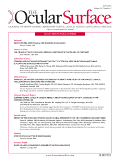
Ocular Surface
Pioneering Discoveries for Visionary CareOcular Surface, published by Elsevier, stands at the forefront of ophthalmology research, with a notable Impact Factor reflecting its significant contribution to the field. As a vibrant platform for disseminating cutting-edge findings, this journal has achieved Q1 ranking in the Ophthalmology category as of 2023, placing it amongst the top-tier journals globally, specifically ranking 4th out of 137 in Scopus with an impressive 97th percentile. Spanning across the years from 2003 to 2024, Ocular Surface focuses on advancing knowledge in areas such as ocular pathology, therapy, and surgical interventions. While the journal is not open access, it provides invaluable insights and empirical data essential for researchers, professionals, and students dedicated to improving ocular health. With an address rooted in Amsterdam, Netherlands, this esteemed journal continues to enrich the global conversation in ophthalmology.
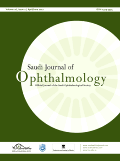
Saudi Journal of Ophthalmology
Transforming Perspectives: Your Source for Cutting-Edge Eye ResearchSaudi Journal of Ophthalmology, published by Wolters Kluwer Medknow Publications, stands as a crucial platform for the dissemination of innovative research and clinical practices in the field of ophthalmology. Since its inception in 2009, this journal has effectively contributed to the growing body of knowledge with a focus on addressing the diverse visual health challenges faced globally. With an ISSN of 1319-4534 and a E-ISSN of 2542-6680, the journal is indexed in Scopus, where it ranks in the Q3 category of ophthalmology, reflecting its commitment to quality research despite the competitive landscape. Situated in India, it provides a unique regional perspective while facilitating global discourse among researchers, practitioners, and students in ophthalmological sciences. Although it currently does not operate as an open-access journal, the Saudi Journal of Ophthalmology is essential for those aiming to expand their understanding of advancements in eye care, making it a valuable resource for professionals dedicated to enhancing patient outcomes through informed research and clinical practice.
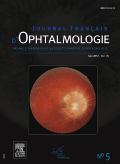
JOURNAL FRANCAIS D OPHTALMOLOGIE
Fostering collaboration in the global ophthalmological community.JOURNAL FRANCAIS D OPHTALMOLOGIE, published by MASSON EDITEUR, is a prominent peer-reviewed journal that serves as a vital resource in the field of ophthalmology. Launched in 1978, this esteemed publication continues to make significant contributions to the advancement of ocular health and vision science, with its scope encompassing clinical practices, innovative research, and the latest technological advancements in ophthalmic care. Based in France, the journal is recognized in the 2023 category quartiles with a Q3 ranking in ophthalmology, reflecting its dedication to quality scholarship within a competitive landscape, as evidenced by its positioning in the 30th percentile of the Scopus rankings. While it operates without Open Access, the journal remains crucial for professionals, researchers, and students alike, providing a platform for sharing knowledge and fostering collaborations in the global ophthalmological community.
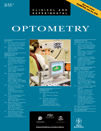
Clinical and Experimental Optometry
Unveiling innovative insights for clinical excellence.Clinical and Experimental Optometry, published by Taylor & Francis Ltd, is a distinguished journal dedicated to advancing the field of optometry and ophthalmology. With an impressive scope covering both clinical practices and experimental research, this journal serves as a vital resource for researchers, healthcare professionals, and students alike. Recognized in the Q2 category for Ophthalmology and Q1 category for Optometry in 2023, it underscores its significance in fostering innovative research and clinical knowledge. The journal has been in publication since 1986 and continues to accept contributions up until 2024, reflecting its ongoing commitment to disseminating high-quality scholarly work. With a Scopus ranking of 40 in Ophthalmology and 5 in Health Professions - Optometry, it is positioned among the leading journals in the field. Although not an open-access journal, it remains integral for anyone invested in the latest trends and findings in vision science, making it an essential part of the academic landscape in the UK and beyond.
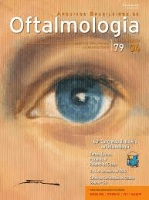
ARQUIVOS BRASILEIROS DE OFTALMOLOGIA
Connecting researchers and clinicians through transformative discoveries.ARQUIVOS BRASILEIROS DE OFTALMOLOGIA is a prominent peer-reviewed journal dedicated to the field of ophthalmology, published by CONSEL BRASIL OFTALMOLOGIA since its inception in 1945. With its commitment to disseminating high-quality research, the journal has transitioned to an Open Access model since 2001, ensuring that vital findings in ophthalmology are freely available to researchers, clinicians, and students alike. Located in São Paulo, Brazil, this esteemed publication occupies a significant position in the medical field, currently holding a Q3 ranking in both the miscellaneous medicine and ophthalmology categories. Although it maintains a legacy of fluctuating impact, recognized for its contribution to the academic community, ARQUIVOS BRASILEIROS DE OFTALMOLOGIA continues to attract a diverse international readership, making it a valuable resource for advancements in eye health, surgical techniques, and ocular research.
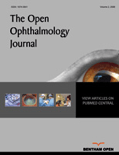
Open Ophthalmology Journal
Exploring the frontiers of eye care and vision science.The Open Ophthalmology Journal, published by Bentham Science Publishers Ltd, is a vital resource in the field of ophthalmology, dedicated to advancing knowledge through open-access research. With an ISSN of 1874-3641, it offers a platform for the dissemination of innovative studies from 2011 to 2024, focusing on the latest developments in eye care and vision science. Despite being categorized in the lower quartile (Q4) according to the 2023 rankings, and holding a position in the Scopus Ricks at 113 out of 137 in the ophthalmology domain, the journal serves as a valuable outlet for emerging scholars and seasoned researchers alike to share their findings. The journal's commitment to accessibility ensures that its content is available to a broad audience, promoting collaboration and knowledge exchange. Located in the Netherlands, The Open Ophthalmology Journal aspires to become a cornerstone for those passionate about understanding and improving ocular health through rigorous scientific inquiry.

Augenheilkunde Up2date
Enhancing Expertise in Vision Science.Augenheilkunde Up2date is a pivotal journal in the field of ophthalmology, published by GEORG THIEME VERLAG KG, a renowned publisher known for its commitment to advancing medical knowledge. With its ISSN 1616-9719 and E-ISSN 1616-9735, this journal serves as a vital resource for researchers, professionals, and students interested in the latest developments and nuanced discussions in eye health. Although not available as open access, its curated content offers significant insights into contemporary research, clinical practices, and emerging trends in ophthalmology, thus promoting the continuous professional development of its readers. There is an emphasis on providing comprehensive reviews that encapsulate the pertinent advancements in the field, making it an essential publication for those aiming to enhance their expertise in eye care and vision science.
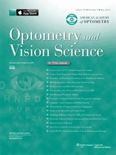
OPTOMETRY AND VISION SCIENCE
Exploring the Frontiers of Vision and Eye HealthOptometry and Vision Science is a premier journal published by Lippincott Williams & Wilkins, dedicated to advancing the field of optometry and ophthalmology. With a rich history dating back to 1905 and a strong emphasis on scientific rigor, the journal has established itself as a vital resource for researchers, professionals, and students alike. Currently ranked in the Q2 category for both Ophthalmology and Optometry, it occupies a significant position in the academic community, as evidenced by its Scopus rankings of #61 among 137 in Medicine - Ophthalmology and #6 among 12 in Health Professions - Optometry. The journal publishes original research, clinical studies, and critical reviews that contribute to the understanding of visual science, the development of innovative practices, and the enhancement of patient care. Although it is not open access, its impactful content is available to subscribers and institutions, fostering a deeper insight into the complexities of vision science. As we approach the journal's centennial milestone in 2024, Optometry and Vision Science continues to reflect the evolving landscape of eye care research and is poised to inspire a new generation of vision scientists.
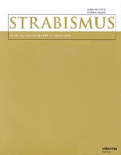
Strabismus
Illuminating the Path to Better Patient OutcomesStrabismus is a distinguished journal published by Taylor & Francis Inc, dedicated to the field of ophthalmology, with a focus on the diagnosis, treatment, and research surrounding strabismic conditions. Since its inception in 1993, this journal has served as a pivotal platform for advancing knowledge and fostering discussion among researchers and clinicians alike, providing critical insights into the complexities of eye alignment disorders. With a current impact factor reflecting its solid standing in the Q3 quartile of ophthalmology journals, Strabismus continues to rank among the notable publications in its field, achieving a Scopus rank of #85 out of 137. Although it operates without an open access model, the journal is accessible to a broad audience of professionals through institutional subscriptions, ensuring that a wealth of research is available to support clinical practices. By encompassing a wide range of topics, from clinical studies to theoretical analyses, Strabismus aims to enhance understanding and improve patient outcomes, making it an essential resource for those engaged in ocular health and research.